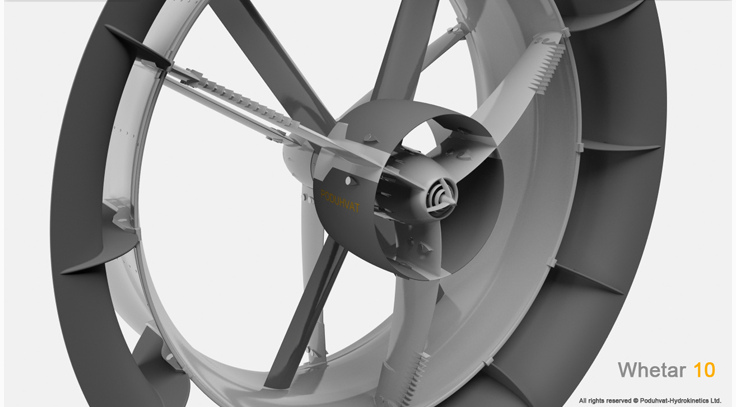Wind power is the conversion of wind energy into a useful form of energy, such as using wind turbines to make electrical power, windmills for mechanical power, wind pumps for water pumping or drainage, or sails to propel ships.
Large wind farms consist of hundreds of individual wind turbines which are connected to the electric power transmission network. For new constructions, onshore wind is an inexpensive source of electricity, competitive with or in many places cheaper than fossil fuel plants. Small onshore wind farms provide electricity to isolated locations. Utility companies increasingly buy surplus electricity produced by small domestic wind turbines. Offshore wind is steadier and stronger than on land, and offshore farms have less visual impact, but construction and maintenance costs are considerably higher.
Wind power, as an alternative to fossil fuels, is plentiful, renewable, widely distributed, clean, produces no greenhouse gas emissions during operation and uses little land. The effects on the environment are generally less problematic than those from other power sources. As of 2011, Denmark is generating more than a quarter of its electricity from wind and 83 countries around the world are using wind power to supply the electricity grid. In 2010 wind energy production was over 2.5% of total worldwide electricity usage, and growing rapidly at more than 25% per annum.
Wind power is very consistent from year to year but has significant variation over shorter time scales. As the proportion of windpower in a region increases, a need to upgrade the grid, and a lowered ability to supplant conventional production can occur. Power management techniques such as having excess capacity storage, geographically distributed turbines, dispatchable backing sources, storage such as pumped-storage hydroelectricity, exporting and importing power to neighboring areas or reducing demand when wind production is low, can greatly mitigate these problems. In addition, weather forecasting permits the electricity network to be readied for the predictable variations in production that occur.
A wind turbine is a device that converts kinetic energy from the wind into electrical power. A wind turbine used for charging batteries may be referred to as a wind charger.
The result of over a millennium of windmill development and modern engineering, today's wind turbines are manufactured in a wide range of vertical and horizontal axis types. The smallest turbines are used for applications such as battery charging for auxiliary power for boats or caravans or to power traffic warning signs. Slightly larger turbines can be used for making small contributions to a domestic power supply while selling unused power back to the utility supplier via the electrical grid. Arrays of large turbines, known as wind farms, are becoming an increasingly important source of renewable energy and are used by many countries as part of a strategy to reduce their reliance on fossil fuels.
A wind lens is a modification made to a wind turbine to make it a more efficient way to capture wind energy. The modification is a ring structure called a "brim" or "wind lens" which surrounds the blades, diverting air away from the exhaust outflow behind the blades. The turbulence created as a result of the new configuration creates a low pressure zone behind the turbine, causing greater wind to pass through the turbine, and this, in turn, increases blade rotation and energy output.
Some achievements
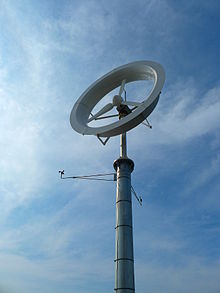 In Japan, wind lenses are being researched by the Wind Engineering Section of Kyushu University.
In Japan, wind lenses are being researched by the Wind Engineering Section of Kyushu University.Wind power is proportional to the wind speed cubed. If we can increase the wind speed with some mechanism by utilizing the fluid dynamic nature around a structure, namely if we can capture and concentrate the wind energy locally, the output power of a wind turbine can be increased substantially. At wind energy section of Kyushu University, a new efficient wind power turbine system has been developed. This system has a diffuser shroud at the circumference of its rotor to embody the wind energy concentration. The diffuser shroud is now named "Wind lens". To apply the wind-lens structure to a larger size turbine, they have developed a compact collection-acceleration device. There are several ongoing projects in which the wind-lens turbines are involved.
The Oklahoma City company has developed a ground-based wind power turbine that it says can increase wind velocity by 79 percent and produce nearly twice the energy of a traditional tower-based turbine with the same swept area. The turbine, featured recently in "The Oklahoman" newspaper, is the brainchild of Dr. Scott Calhoon, a surgeon who works as a consultant now – but clearly spends a lot of time dabbling in wind.
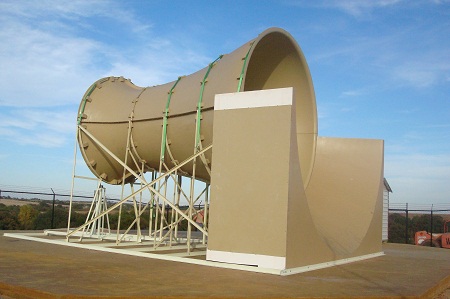
From the first flight at Kitty Hawk, it took about 50 years to engineer the switch from spinning propellers to more efficient jet engines. Now wind technology could be about to make a similar design leap, barely a decade after the commercial industry’s birth in the U.S.
Using features drawn from jet engine design, FloDesign Wind Turbine has developed a prototype that is three times more efficient at turning the wind into electricity than today’s towering, three-bladed models, according to CEO Stanley Kowalski III. Carefully shaped cowlings channel air into patterns that create spinning vortexes – like miniature tornadoes – as the currents exit the device. This trick accelerates the air as it pass through.
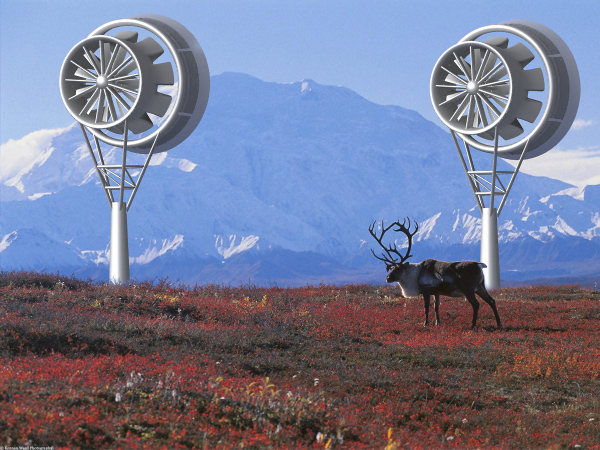
The technology could transform the commercial wind business with units that are easier to install, longer lasting, and more adaptable to a variety of environments. Today’s wind turbines can top out at 300 feet or taller, requiring a train of tractor trailers to haul tower sections and blades that are as a long as a football field. FloDesign’s new approach fits on a single rig.
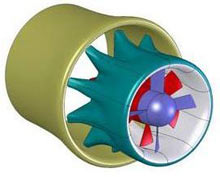
The idea of enshrouding wind-turbine blades isn’t new. But earlier designs were too big to be practical, or they didn’t perform well, in part because the blades had to be very closely aligned to the direction of the wind–within three or four degrees, says Stanley Kowalski, FloDesign’s CEO. The new blades are smaller and can work at angles of up to 15 to 20 degrees away from the direction of the wind.
From the front, the wind turbine looks something like the air intake of a jet engine. As air approaches, it first encounters a set of fixed blades, called the stator, which redirect it onto a set of movable blades–the rotor. The air turns the rotor and emerges on the other side, moving more slowly now than the air flowing outside the turbine. The shroud is shaped so that it guides this relatively fast-moving outside air into the area just behind the rotors. The fast-moving air speeds up the slow-moving air, creating an area of low pressure behind the turbine blades that sucks more air through them.
Because its blades are lighter and smaller, the design starts spinning and making energy at lower wind speeds and is more tolerant of volatile wind patterns, making it a natural for windy niches where big turbines can’t fit, such as in cities, on ridgelines and beaches.
Scaled down blades also spin faster, reducing the need for the costly gear boxes that today’s windmills must use to connect slow-moving rotors to a high-speed generator kits. With fewer gears and other moving parts, the company claims it can reduce the parts count in a turbine by up to 75%, thereby boosting reliability, too.
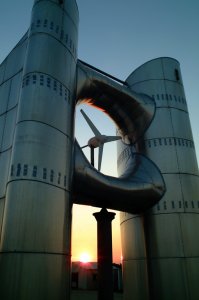 The scale turbine/concentrator design prototype was constructed on the ERU Test Site as part of the EU-funded Wind Energy For the Built Environment (WEB) project. It was tested with both a Horizontal Axis Wind Turbine (HAWT) and a Vertical Axis Wind Turbine (VAWT) - measurements were taken of the prevailing wind conditions and the power output.
The scale turbine/concentrator design prototype was constructed on the ERU Test Site as part of the EU-funded Wind Energy For the Built Environment (WEB) project. It was tested with both a Horizontal Axis Wind Turbine (HAWT) and a Vertical Axis Wind Turbine (VAWT) - measurements were taken of the prevailing wind conditions and the power output.
I ran across some news that Marquiss Wind Power just raised $1.3 M in series A funding, which, in and of itself, isn’t that big of a deal to me (because funding doesn’t = anything). That said, Marquiss Wind Power has quite the value proposition with their ducted wind turbine product called Aeropoint, a product that comes in three sizes. It’s a small-wind turbine built for commercial buildings of 1-3 floors. Based out of Folsom, California, the company had encouraging results with the first three test turbines. Actually, the results were so good the company claims purchasers should have a payback period of 2-7 years. You’ll notice that depending on a lot of different factors, a 2-7 year payback is about 2x faster than the payback for solar.
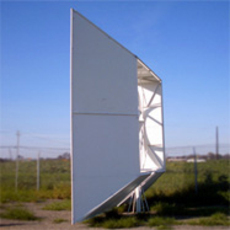
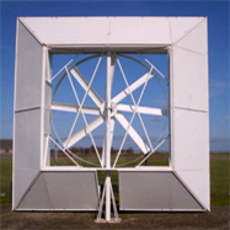
The Aeropoint Ducted Wind Turbine stands tall at about 19 feet and weighs about the same as regular rooftop mechanical equipment — no structural changes required. The square frame, which rotates on an axis to face the wind, encases the star-shaped turbine blades. Looks pretty good, right? And Marquiss Wind Power estimates the price at $30k – $40k, depending on the model you choose.
Capture, accelerate, concentrate. These three words express the essence of SheerWind’s approach to wind power. The name INVELOX comes from this dedication to INcreasing the VELOcity of wind. What the technology produces—energy that is affordable, abundant, safe, and clean—is nothing short of revolutionary.
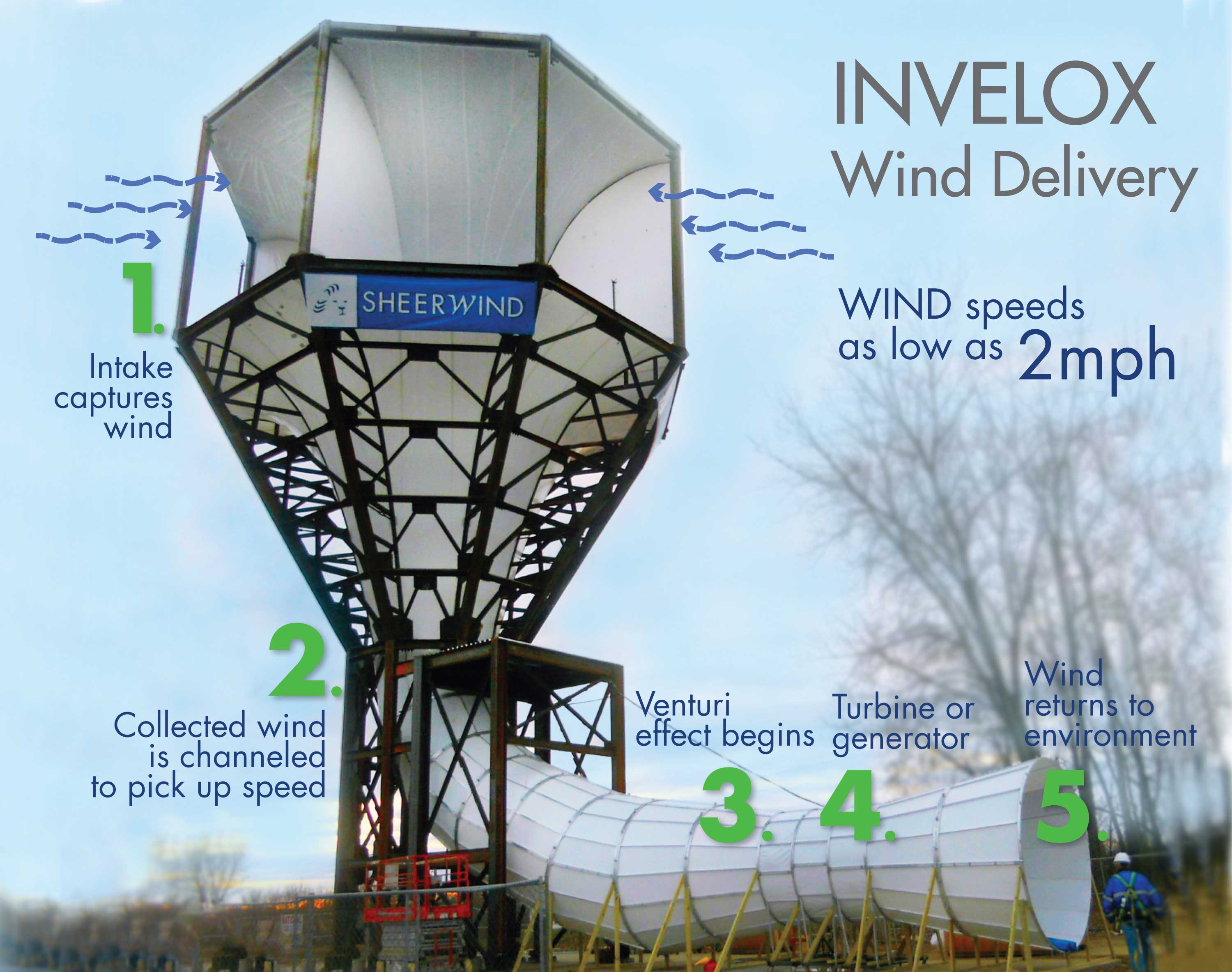
Bringing the airflow from the top of the tower to ground level allows for greater power generation with much smaller turbine blades. It also allows for networking, allowing multiple towers to direct energy to the same generator. The unit is about 50% shorter than traditional wind towers and uses a ground-based turbine with blades that are 84% smaller. Fewer generators are required, so equipment and maintenance costs are lower. Most importantly, energy output is greater.
INVELOX is scalable, equally suitable for use in major wind farms or micro-generation settings. It will produce power effectively at much lower wind speeds than current systems do, which means it will have a dramatically wider geographical range of use.
SheerWind’s value proposition is clear: facilitating inexpensive, efficient power generation with less impact to the environment and surrounding community.
WindTamers patented technology produces more than double the power of traditional wind turbines for a faster return on investment. The turbines are practical for more Settings. The vibration-free turbines work well in a wider range of winds and heights, enabling them to be used in places such as rooftops and residential neighborhoods. They are an environmentally and socially responsible product. The turbines not only provide green energy, they are also silent, safe for birds and only as tall as a flag pole.
Learn more at http://www.windtamerturbines.com.
Wind Energy Conversion in the Built Environment
Context of the research
The research is carried out within the framework of a research program (Delfts Interfacultair Onderzoeks Centrum 1;DIOC 1) in which many faculties join, forming a multi disciplinary group.
The DIOC 1 program has the subject "Decentralized Production and Storage of Electricity for Large Scale Application of Renewable Energy".
The research topic will focus on wind energy conversion in the built environment. This means research on wind turbines in the built environment and research on wind driven ventilation.

Objectives of our research
The objective of our research is:
"Indicate the possibilities of wind turbines in the built environment and wind driven ventilation".
The research will therefore involve calculations and measurements of the efficiency of a wind turbine in the built environment, the interaction of the wind turbine with the building, the acoustics, etc.
Results for the moment
Until now the research is directed towards the efficiency of wind turbines integrated in buildings. Integrated means that the building contributes to the production of wind energy in such way that it creates higher local wind velocities through the wind turbines.

First order calculations show higher efficiencies for wind turbines integrated in buildings than turbines in the free field. The higher efficiency is due to the concentrator effect of buildings that causes the wind to achieve higher velocities through the rotor plane.

For high efficiencies the size of the turbine compared to the size of the building has to be kept small.
La Tunisie présente une éolienne sans pales qui ne tue pas les oiseaux!

Technologie – Energie : Basée sur l’idée des moulins à vent, la technologie éolienne est revue après quelques années de fonctionnement.
En effet, les techniciens ont remarqué que les pales des machines tuent les oiseaux et produisent des vibrations qui finissent par rendre malades toutes les personnes qui habitent dans son entourage…
Voici donc pourquoi, je suis ravie de relayer que la Tunisie a mis au point une éolienne sans pales nommée Saphon!
London-based manufacturer Poduhvat has developed a wind turbine which they claim can produce five times more energy than traditional wind turbines with the same rotor size. The contra-rotating Whetar turbine is almost completely silent and it can generate 43,8 MW/h per year with under 50% load capacity.
The turbine has two double contra-rotating rotors encased with specially constructed housing duct. The rotors cancel each other’s rotational forces, which significantly reduces vibrations and makes the turbine more suitable for urban areas. The ducted part of the turbine creates a ring-like area of high pressure around the turbine, leaving the area of lower pressure behind. This works as a funnel sucking air into the turbine. The low speed air accelerates and is used by two contra-rotating rotors which additionally accelerate each other.
The expected energy production depends on the site’s prevailing winds but the company claims that the turbine can produce 43,8 MW/h annually, under 50% of load capacity. The turbine, with smaller-sized rotors compared to the conventional rotor models of the same category and practically no noise, can be mounted at lighting poles and building roofs.
However, almost all the implemented solutions for capturing and concentrate the wind energy use the same ducted profile (or variations of it):

So, the air volume that pass through this conoidal shroud is slightly more than through a classic 3 blades turbine because a big fraction of it flow around.
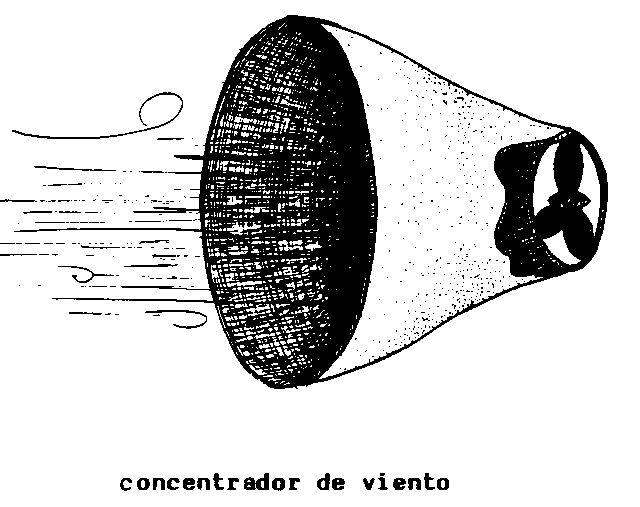
"These ‘breakthroughs’ all fail commercially because when they get to a real world field test of a prototype the concentration effect turns out to be less significant than predicted and the performance falls well short of the inventor’s initial newsworthy claims,” Mike Bergey, president of Bergey Wind Power said.
"It turns out that it’s easier for the wind to flow around the concentrator or diffuser, so less wind actually flows through the rotor. This poor actual performance combined with the significant added cost of the concentrator or diffuser structure invariably means that these turbines produce energy at higher costs than conventional non-augmented horizontal-axis wind turbines. That’s why these companies never get past a handful of installations in the field – the numbers just don’t work.”
That's why in the last page I propose to researchers, developers and investors another alternatives to capture and concentrate wind energy.
Useful / interesting links: Renewable energy, Wind Energy Basics, CFD modeling, Wind Energy Technology, Selsam innovations in altenative energy, Wind Turbines and the Energy in Wind, 2014 Wind Turbine Buyer's Guide
A site full of ideas in this domain: https://salientwhiteelephant.wordpress.com/tag/wind-turbine-shroud/
Below is a book online about wind turbines:
CAD and CAE via the web – Onshape and SimScale partner up
